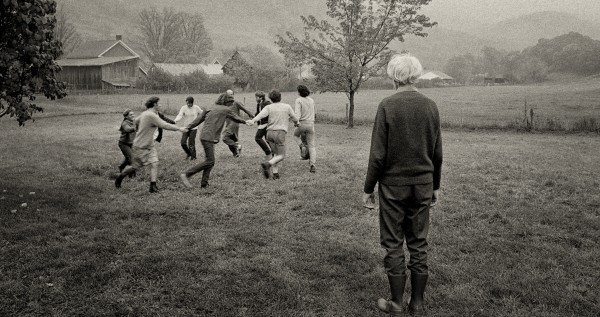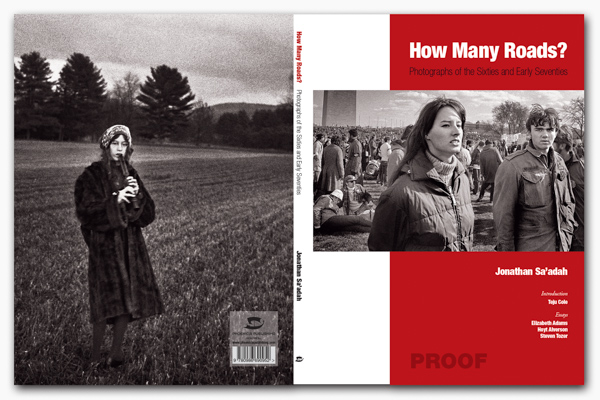From Fall, 1970 through the following June I was a student of Minor White’s. Though I was chronologically an undergraduate he placed me in his graduate program. It’s people from that class that you see in the circle above.
If history is written by victors it also contains a good measure of current social mores. I was pleased to be sent a link to this recent essay by Susan Stamberg. White died almost thirty years ago. The essay has candor and judgement in its measurement of the man, who I knew only in the context of school and a few extended workshops. But I think there is a poignancy in this photo that’s correct.
I’m also attached to the photo for a personal reason. If you look closely there is a hill hiding in the background fog. It is a small ski area in Vermont called “Suicide-Six”, which was the local ski hill when I was young. So seeing it always makes me smile.



I really like this photograph. The way he stands at a distance, watching the frolic. There’s loneliness there — or at least, I read loneliness into the distance; maybe that’s my lens rather than the image itself.
After typing the above I went and read the article to which you linked. His work is stunning. Thank you.
It’s so odd: after all these years of seeing and knowing this photograph of yours, I never realized it was taken in Vermont, or that Suicide Six is in the background. I always thought it was a rural setting in Massachusetts! Did Minor ever see it himself, and if so, what did he say?
of course you Jonathan are standing even farther away… so perhaps for you too it is/was a mirror and a snapshot of what drew you to photography ?
Rachel and Vivian: To be honest I don’t remember exactly why I ended up where I was. Minor was puzzled by my style of photography (he called me a “snap-shooter”) and gave me the assignment of recording the graduate class. I don’t remember if I was in the circle and took myself out or how it worked but knowing myself I probably took myself out. So in a way I think you’re right, Vivian, it’s a bit ironic.
Even though I spent a year in this class I ended up feeling as if I didn’t know Minor well. It was an awkward situation. I don’t think he was comfortable teaching women and there were a couple in this class, and I think I was immature and not really ready to be part of graduate level study. It was my only option, though, because Dartmouth was picky about where they would give me transfer credits and at that point (1970) there were few colleges offering photographic study within a liberal arts context.
Beth – I’m not surprised that you were confused. It was pure co-incidence that the photo was taken in Pomfret. There was a house there that an MIT alum had donated to the college and so it was used for teaching retreats. So it was only through serendipity that I ended up in my own “backyard” of Pomfret/Woodstock.
This is such a great photograph! Such a spontaneous-looking moment, yet it’s so perfect it seems almost constructed. Very nice!